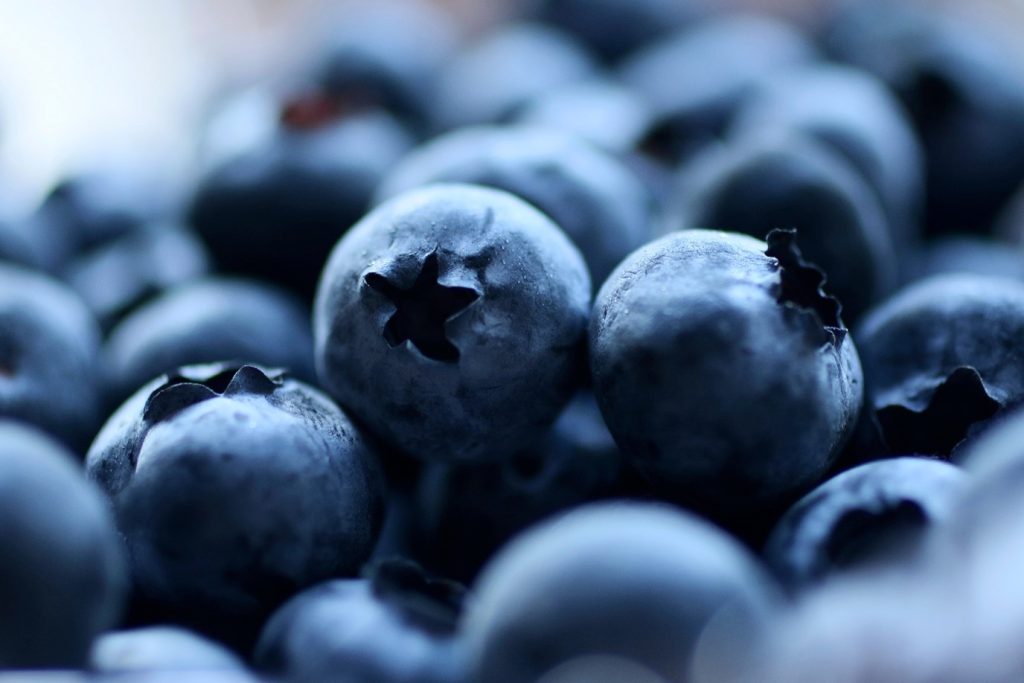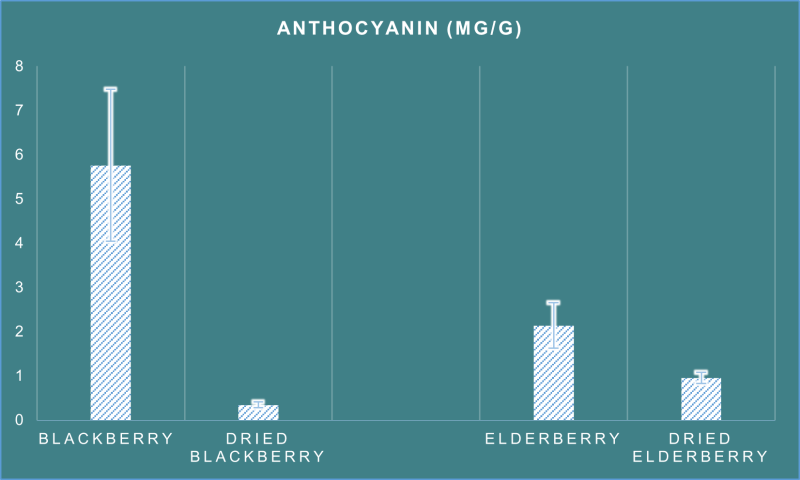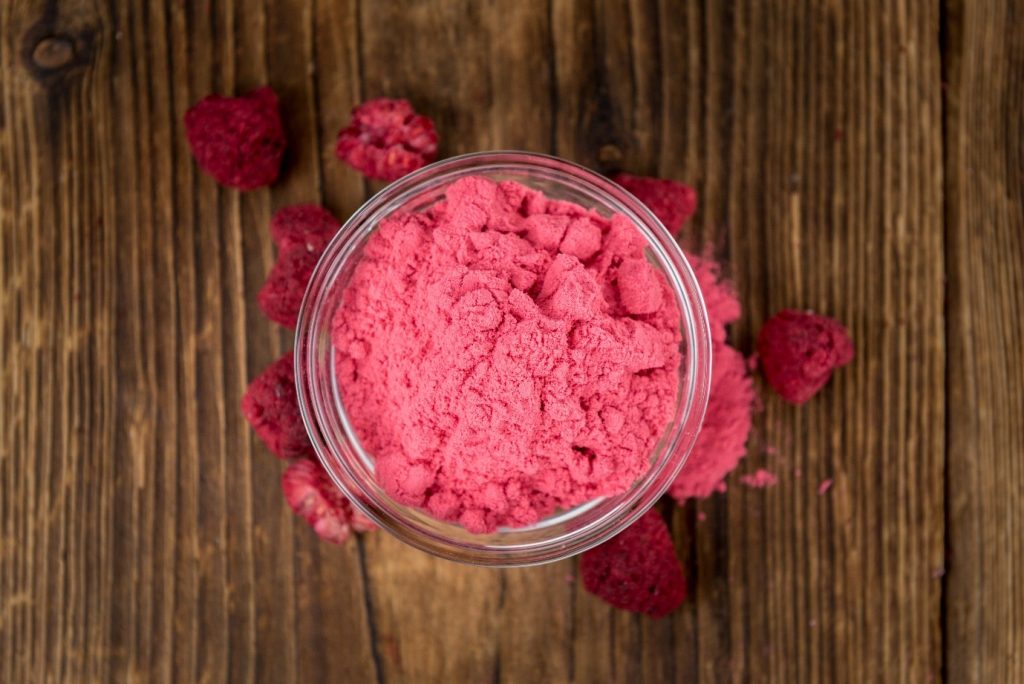Processing of fruits or vegetables can improve sustainability factors like shelf life (e.g. freezing or juicing) or reduced shipping weight (dry powders), but many nutrients are sensitive to heat and oxidation that these processes can introduce. In this article, we look at how processing can impact nutrient content and ways we might reduce that impact to balance nutrition with sustainability in the future.

Key dietary shifts are emerging through a collaboration of food science and nutrition with the aim to couple reductions in both our carbon footprint and risk of chronic disease, helping to build a sustainable healthy future for us all.
According to online data base, Our World in Data, in 2019 74% of global mortality was attributed to chronic disease, with CVD (cardiovascular disease), cancer, and diabetes the main contributors. Our eating habits and the associated increase in obesity worldwide being a primary cause of these statistics. At the same time Board Bia share statistics on food waste indicating over one third of all food produced in a year is wasted, contributing to almost 10% of global GHG (greenhouse gas) emissions and losses of €1.2 trillion each year. This highlights the potential for food science and nutrition in preserving our future, and there are some exciting dietary innovations already out there.
Nutrition of berry fruit
A shift from western dietary patterns consisting of red meats and processed foods high in saturated fat, sugar, and salt to the flexitarian style diet consisting of whole foods like fruits, vegetables, grains, pulses, and oily fish is becoming increasingly popular. These are more nutrient dense high fibre options, but many of these foods contain non-nutrient compounds that have potential health benefits called phytochemicals.
Regardless of fresh or frozen, in the case of berries, they possess a nutritional edge due to their phytochemical composition which has been quantified in numerous studies (Toledo-Martin et al. 2018 and Ponder et al. 2021). Phytochemicals such as polyphenols, anthocyanins, stilbenes, and carotenoids along with essential vitamins and minerals are found in common house-hold berries such as blueberries, blackberries, strawberries, and raspberries. Lesser common berries such as Sea Buckthorn and Mulberry are composed of the same phytochemicals. These compounds have been shown to have anti-inflammatory and antioxidant properties that have linked them to different parts of health.
Berries as Antioxidants
The high antioxidant activity of berries due to their phytochemical concentration means they help to effectively scavenge unwanted oxidizing radicals from our body. These oxidizing radicals are thought to be linked to development of different diseases and health conditions, and may be one way berries work to improve health (Soobrattee et al, 2005).
Heart Health
Studies have shown phenolics such as ellagic acid present in these berries may protect against atherosclerotic plaque formation in our blood vessels, reducing the risk of hypertension and heart disease (Olas et al. 2008). In 2015, the PREDIMED study concluded increased polyphenol intakes were associated with reduced blood pressure in trial participants as well as decreased biological markers of inflammation and oxidation, possibly contributing to reduced risk of cardiovascular disease.
Blood sugar management
Clinical trials in humans have shown the anthocyanins and stilbenes found in these berries may reduce the impact of postprandial hyperglycaemia (sugar spikes after a meal), which could protect cells of the pancreas and liver from oxidative stress and inflammation, leading to a potential reduction in the risk of type 2 diabetes (Blaak et al, 2012).
How does processing impact berry nutrition?
For many people, fresh berries are the preference when it comes to taste and texture, but these non-climacteric fruits have poor shelf-life. Within a couple of days to a week, berries enter senescence and mould begins to grow. For this reason, freshly purchased berries are often thrown in the bin and this is a primary example of the food waste that contributes to significant GHG emissions.
Food scientists have looked at several berry preservation methods to prolong their naturally short shelf-life, but there is often a caveat associated with the properties of processed food.
Dried berries
Thermal processing (dried berries), which aims to reduce the moisture content of the berries, will successfully extend shelf-life but causes leaching of certain nutrients and phytochemicals (Figure 1) which negatively impacts the nutritional value of the berries.

Figure 1. Impact of thermal processing on anthocyanin content of blackberries. (P. Reville et al. University College Cork, 2022).
Juiced berries
Juicing berries has also been a successful processing method in extending shelf-life, but this too causes a reduction in desirable phytochemicals such as anthocyanins. These conventional processing methods are effective, but we need to think outside the box to make our food systems more sustainable. Shelf-life and nutritional integrity must be optimised.
Frozen Berries

Freezing or freeze drying provides fruit and vegetable products with a variety of economic and environmental benefits.
We don’t have to worry about losing nutritional value if we opt for frozen berries. Studies have shown berries maintain a complete nutritional profile after freezing (Lohachoompol et al, 2004) unlike other thermal processing methods. This means shelf-life is improved without compromising nutritional profile which we now know is of great value in berries.
The economic and Environmental Benefits
There is no need to bin frozen berries a few days after they’re bought, immediately ruling out food waste. As well as this, Frozen fruit can be, and usually are sold in larger volumes of up to 1kg due to improved stability post freeze-drying, compared to fresh berries which are usually sold in trays of 100g to 300g. If we were to switch to frozen berries, this would significantly reduce the amount of plastic packaging required which is another crucial aspect of sustainability.
The fresh berries we buy often contain stems and leaves, otherwise known as ‘cut-offs’. These cut-offs are usually thrown to waste in the home. However, innovative industries are now using cut-offs from fruit & vegetables going through the freeze-drying process to generate biogas through anaerobic microbial digestion, providing energy in a circular manner which is further reducing the waste generated from frozen fruit and vegetable production (Carlos Morales-Polo et al, 2019).
For consumers, there is also economic value to frozen berries. At one popular international grocery store, fresh berries cost between €10 & €20 per kg compared to frozen berries at approximately €3 per kg, indicating a significant cost-saving associated with frozen berries.
Freeze drying can strike a balance between sustainability and nutrition, making it a promising tool to consider for the future food system.
Contributor:
-
References
https://www.bordbia.ie/industry/news/food-alerts/frightening-facts-on-food-waste/
Toledo-Martín EM, García-García MDC, Font R, Moreno-Rojas JM, Salinas-Navarro M, Gómez P, et al. Quantification of Total Phenolic and Carotenoid Content in Blackberries (Rubus Fructicosus L.) Using Near Infrared Spectroscopy (NIRS) and Multivariate Analysis. Molecules. 2018;23(12).
Zhou W, Niu Y, Ding X, Zhao S, Li Y, Fan G, et al. Analysis of carotenoid content and diversity in apricots (Prunus armeniaca L.) grown in China. Food Chem. 2020;330:127223.
Fang J. Bioavailability of anthocyanins. Drug Metab Rev. 2014;46(4):508-20.
Chakraborthy A, Ramani P, Sherlin HJ, Premkumar P, Natesan A. Antioxidant and pro-oxidant activity of Vitamin C in oral environment. Indian J Dent Res. 2014;25(4):499-504.
Dudonné S, Vitrac X, Coutière P, Woillez M, Mérillon JM. Comparative study of antioxidant properties and total phenolic content of 30 plant extracts of industrial interest using DPPH, ABTS, FRAP, SOD, and ORAC assays. J Agric Food Chem. 2009;57(5):1768-74.
Zhou Y, Gao YG, Giusti MM. Accumulation of Anthocyanins and Other Phytochemicals in American Elderberry Cultivars during Fruit Ripening and its Impact on Color Expression. Plants (Basel). 2020;9(12).
Ponder A, Hallmann E, Kwolek M, Średnicka-Tober D, Kazimierczak R. Genetic Differentiation in Anthocyanin Content among Berry Fruits. Curr Issues Mol Biol. 2021;43(1):36-51.
Tasinov O, Dincheva I, Badjakov I, Kiselova-Kaneva Y, Galunska B, Nogueiras R, et al. Phytochemical Composition, Anti-Inflammatory and ER Stress-Reducing Potential of Sambucus ebulus L. Fruit Extract. Plants (Basel). 2021;10(11).
Kim DW, Han HA, Kim JK, Kim DH, Kim MK. Comparison of Phytochemicals and Antioxidant Activities of Berries Cultivated in Korea: Identification of Phenolic Compounds in Aronia by HPLC/Q-TOF MS. Prev Nutr Food Sci. 2021;26(4):459-68.
Ferreira-Santos P, Badim H, Salvador  C, Silvestre AJD, Santos SAO, Rocha SM, et al. Chemical Characterization of Sambucus nigra L. Flowers Aqueous Extract and Its Biological Implications. Biomolecules. 2021;11(8).
Liao X, Greenspan P, Pegg RB. Examining the Performance of Two Extraction Solvent Systems on Phenolic Constituents from U.S. Southeastern Blackberries. Molecules. 2021;26(13).
Tresserra-Rimbau A, Rimm EB, Medina-Remón A, Martínez-González MA, de la Torre R, Corella D, et al. Inverse association between habitual polyphenol intake and incidence of cardiovascular events in the PREDIMED study. Nutr Metab Cardiovasc Dis. 2014;24(6):639-47.
Olas B, Wachowicz B, Tomczak A, Erler J, Stochmal A, Oleszek W. Comparative anti-platelet and antioxidant properties of polyphenol-rich extracts from: berries of Aronia melanocarpa, seeds of grape and bark of Yucca schidigera in vitro. Platelets. 2008;19(1):70-7.
Whyte AR, Cheng N, Butler LT, Lamport DJ, Williams CM. Flavonoid-Rich Mixed Berries Maintain and Improve Cognitive Function Over a 6 h Period in Young Healthy Adults. Nutrients. 2019;11(11).
Yamakawa MY, Uchino K, Watanabe Y, Adachi T, Nakanishi M, Ichino H, et al. Anthocyanin suppresses the toxicity of Aβ deposits through diversion of molecular forms in in vitro and in vivo models of Alzheimer’s disease. Nutr Neurosci. 2016;19(1):32-42.
Giuliano C, Cerri S, Blandini F. Potential therapeutic effects of polyphenols in Parkinson’s disease: in vivo and in vitro pre-clinical studies. Neural Regen Res. 2021;16(2):234-41.
Kim HG, Ju MS, Shim JS, Kim MC, Lee SH, Huh Y, et al. Mulberry fruit protects dopaminergic neurons in toxin-induced Parkinson’s disease models. Br J Nutr. 2010;104(1):8-16.
Kristo AS, Klimis-Zacas D, Sikalidis AK. Protective Role of Dietary Berries in Cancer. Antioxidants (Basel). 2016;5(4).
Peiffer DS, Wang LS, Zimmerman NP, Ransom BW, Carmella SG, Kuo CT, et al. Dietary Consumption of Black Raspberries or Their Anthocyanin Constituents Alters Innate Immune Cell Trafficking in Esophageal Cancer. Cancer Immunol Res. 2016;4(1):72-82.
Aiyer HS, Warri AM, Woode DR, Hilakivi-Clarke L, Clarke R. Influence of berry polyphenols on receptor signaling and cell-death pathways: implications for breast cancer prevention. J Agric Food Chem. 2012;60(23):5693-708.
Bowers JL, Tyulmenkov VV, Jernigan SC, Klinge CM. Resveratrol acts as a mixed agonist/antagonist for estrogen receptors alpha and beta. Endocrinology. 2000;141(10):3657-67.
Nantz MP, Rowe CA, Muller C, Creasy R, Colee J, Khoo C, et al. Consumption of cranberry polyphenols enhances human γδ-T cell proliferation and reduces the number of symptoms associated with colds and influenza: a randomized, placebo-controlled intervention study. Nutr J. 2013;12:161.
Hemilä H, Chalker E. Vitamin C for preventing and treating the common cold. Cochrane Database Syst Rev. 2013;2013(1):Cd000980.
Sdona E, Ekström S, Andersson N, Hallberg J, Rautiainen S, Håkansson N, et al. Fruit, vegetable and dietary antioxidant intake in school age, respiratory health up to young adulthood. Clin Exp Allergy. 2022;52(1):104-14.
Hawkins J, Baker C, Cherry L, Dunne E. Black elderberry (Sambucus nigra) supplementation effectively treats upper respiratory symptoms: A meta-analysis of randomized, controlled clinical trials. Complement Ther Med. 2019;42:361-5.
Blaak EE, Antoine JM, Benton D, Björck I, Bozzetto L, Brouns F, et al. Impact of postprandial glycaemia on health and prevention of disease. Obes Rev. 2012;13(10):923-84.
Soobrattee MA, Neergheen VS, Luximon-Ramma A, Aruoma OI, Bahorun T. Phenolics as potential antioxidant therapeutic agents: mechanism and actions. Mutat Res. 2005;579(1-2):200-13.
Wanling He et al. Ascorbic Acid can Reverse the Inhibition of Phytic Acid, Sodium Oxolate and Sodium Silicate on Iron Absorption in Caco-2 cells. Int J Vitam Nutr Res. 2018 Feb;88(1-2):65-72.
Wojdyło A, Figiel A, Oszmiański J. Effect of drying methods with the application of vacuum microwaves on the bioactive compounds, color, and antioxidant activity of strawberry fruits. J Agric Food Chem. 2009;57(4):1337-43.
Lohachoompol V, Srzednicki G, Craske J. The Change of Total Anthocyanins in Blueberries and Their Antioxidant Effect After Drying and Freezing. J Biomed Biotechnol. 2004;2004(5):248-52.
White BL, Howard LR, Prior RL. Impact of different stages of juice processing on the anthocyanin, flavonol, and procyanidin contents of cranberries. J Agric Food Chem. 2011;59(9):4692-8.
Michalczyk MaMRaMI. The effect of air-drying, freeze-drying and storage on the quality and antioxidant activity of some selected berries. Journal of Food Processing and Preservation. 2009;33:11 – 21.
Jafarzadeh S, Mohammadi Nafchi A, Salehabadi A, Oladzad-Abbasabadi N, Jafari SM.Application of bio-nanocomposite films and edible coatings for extending the shelf life of fresh fruits and vegetables. Adv Colloid Interface Sci. 2021;291:102405.
Franco Van de Velde, Mary H. Grace, Debora Esposito, Maria Elida Pirovani, Mary Ann Lila. Quantitative comparison of phytochemical profile, antioxidant, and anti-inflammatory properties of blackberry fruits adapted to Argentina. Journal of Food Composition and Analysis, 47 (2016), 82-91.
Carlos Morales-Polo et al. Reviewing the anaerobic digestion of food waste: From waste generation and anaerobic process to it perspectives. MDPI. Pages 1804 (2018).

 Paraic Reville (BSc) graduated with a BSc in Nutritional Sciences from University College Cork and is currently completing a MSc in Clinical Nutrition & Dietetics at University College Dublin. Research interests lie in antioxidant and anti-inflammatory potential of food, sustainable nutrition, and dietary modulation of chronic disease.
Paraic Reville (BSc) graduated with a BSc in Nutritional Sciences from University College Cork and is currently completing a MSc in Clinical Nutrition & Dietetics at University College Dublin. Research interests lie in antioxidant and anti-inflammatory potential of food, sustainable nutrition, and dietary modulation of chronic disease. 